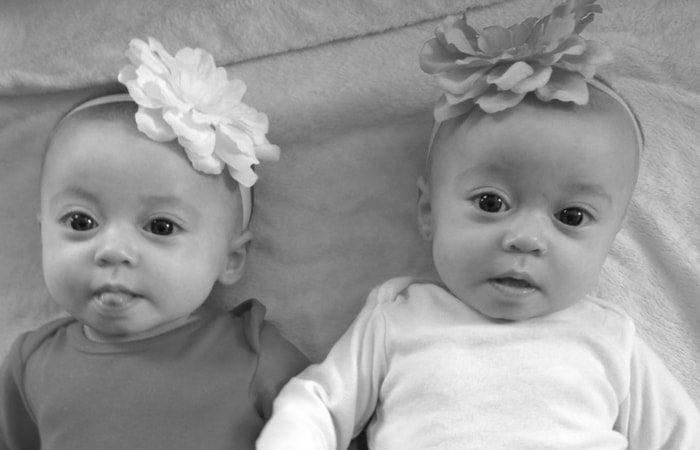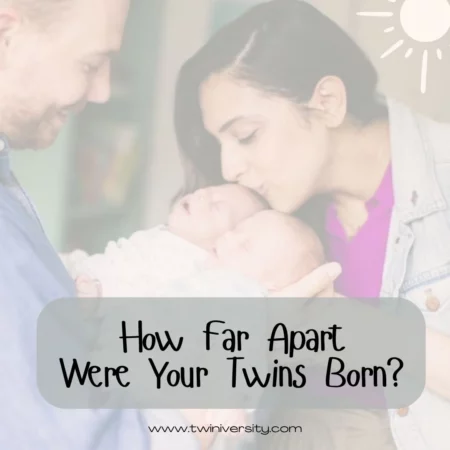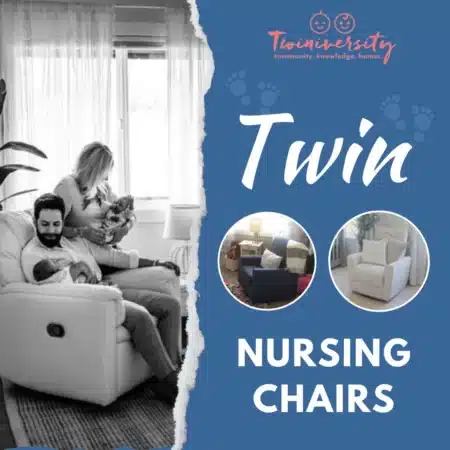Last updated on September 28th, 2021 at 01:57 pm
I spent two years denying my daughters were identical twins. Two years wearing mom goggles that were only able to see the vast differences (or so I thought) between my twin daughters.
Our first ultrasound was a complete shock. “You’re having twins!” The sonographer (and doctor) explained to my husband and I that we were expecting fraternal twins because there was a membrane that separated the babies, making them Dichorionic-Diamniotic or DiDi. The next 8 months of my pregnancy were spent racking my brain about how this could have happened. All the “qualifications” for women who were most likely to conceive fraternal twins didn’t fit me or my lifestyle. The criteria for conceiving fraternal twins includes: runs in the family (zero twins in our families), over 35 years old (I was only 31), above average height (I would classify myself as being shorter compared to the national average).
When my daughters were born, we learned that the placentas had fused together. In the operating room, my husband questioned the doctor again, asking, “So, does that mean they could be identical?” After we found out that the twins shared a blood type, my brain was all consumed with thoughts of identical vs. fraternal. Every second I was able to spend with my twins during those first few weeks in the NICU, I spent comparing the differences between my girls while also taking note of the similarities.
During the infant years, we received numerous comments from strangers about how alike our twins looked (“Wow! They really are identical!”) and answering the age-old question (“Are they identical?”) and after my response of, “They are fraternal,” these strangers looked at me like I was a lunatic.
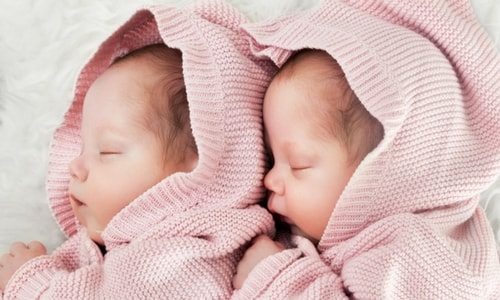
In my mind, I was only able to see the differences between my twin babies. I always had the belief that identical was equivalent to exactly the same and that meant multiples had to be Xerox copies of each other. In my case, I had a composition notebook full of dissimilarities between my kids: Twin A had a freckle on her cheek. Twin B had a birth mark on her nose. Twin A weighed more. Twin B was taller. Twin A rolled over first. Twin B crawled first. All of these differences suggested to me that they couldn’t be monozygotic.
During this time, I also questioned every doctor I came across – pediatrician, OB, child development specialist, neonatologists – about whether it was possible that they could be identical twins. NO. Every single doctor said, “No, two sacs, two placentas meant they are 100% fraternal.”
I gave up my crazy zygosity obsession until my daughters turned two. At that time, I joined a twin mom club and through this network I learned that many other MoMs found out that their DiDi twins were in fact identical.
Like many parents, I was hesitant to conduct a DNA test to determine the zygosity of my twins because I only saw the differences, more so than the similarities among my twins. The zygosity test came back with all markers confirming they were identical. It was only then that I realized that identical twins are very similar, but not exactly the same. Because of this, I have noted some common misconceptions about identical twins, all reasons why I denied my twins identicalness for so long.
1. Not all DiDi twins are fraternal – There are many moms of DiDi twins who can’t see that their twins are in fact identical. As MoMs we tend to look for each child’s unique qualities and therefore see each child as being quite different. I was always confused why my twins’ grandparents had a hard time telling the difference between my girls. It was because, instead, they only saw the overwhelming resemblances between the twins.
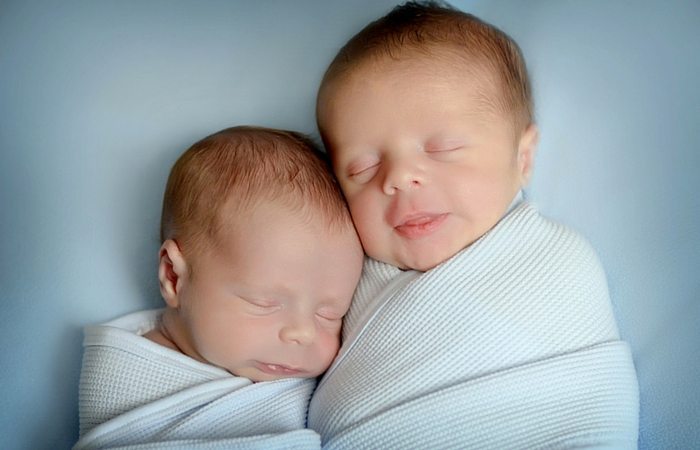
2. Identical twins likely won’t have the same height and weight at birth – One of the first misconceptions I had about identical twins was the fact that my twins weren’t the exact same height and weight at birth. There was a 5 oz and ¼ inch disparity between my girls, but I was under the impression that identical implied exact replicas including these physical markers.
3. Doctors aren’t always informed on the zygosity of identical twins – Contrary to popular belief, doctors are often mistaken about the zygosity of twins. Every single doctor that knew my twins had two placentas and two sacs refused to even entertain the idea that they could potentially be identical. The DNA test confirmed that all these doctors were incorrect.
4. Hairline/parts can be nonidentical – In the two years that I didn’t know the zygosity of my twins, I looked for the most minuscule differences, including the natural hair lines of my twins. I sat the girls side-by-side and examined whether their parts were in the same location. It turns out one twin’s natural part is very defined and the other twin’s hair poofs over her part, making it hard to tell the exact location.
5. Personalities of identical twins differ – One twin is sassy, the other is sensitive. One twin likes to make her bed in the morning, the other prefers her sheets in a hump on her bed. Many identical twins’ personalities couldn’t be more different.
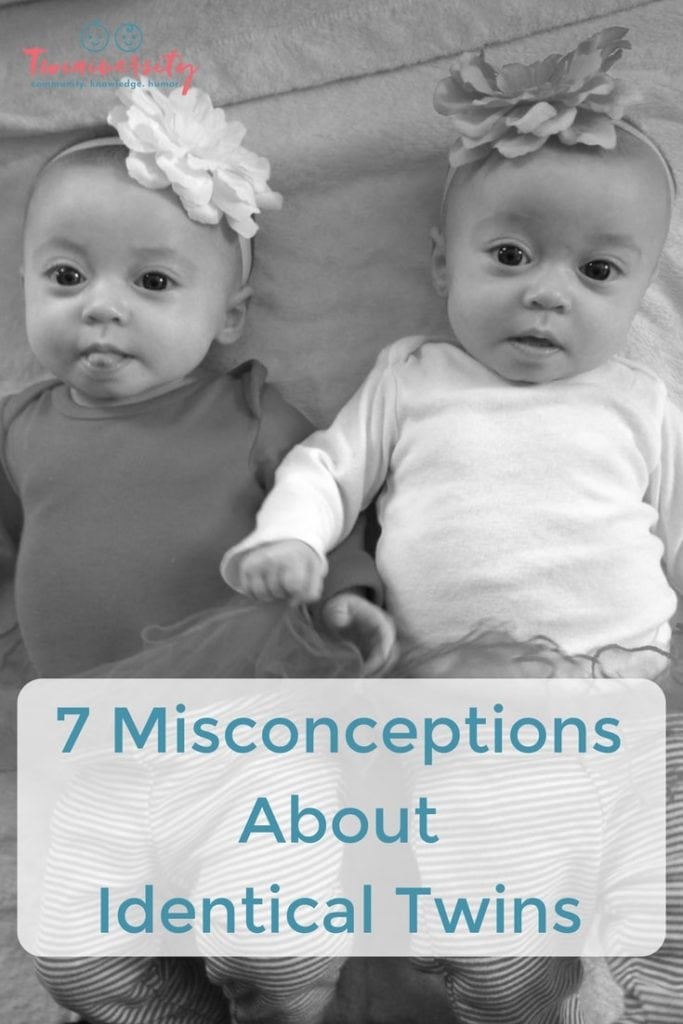
6. Parents of identical twins will confuse kids (at least once) – When my twins were only a few months old, they woke up from their nap in different cribs. They weren’t even crawling yet, so it was clearly my mistake and I had placed them in the wrong crib! Even though parents of identical twins are the first to point out the contrasting features of their kids, it is likely we have all mixed up our twins at least once.
7. Many parents don’t know whether their twins are identical or fraternal – Several MoMs who have DiDi, same gender, same blood type twins, often trust their doctor’s information on the zygosity of their twins, like I did. In this case, there is a chance their multiples may be monozygotic.
Does it matter whether you know if your twins split from one egg or were created from two? In most cases, no. In my situation, it answered many questions and ended my crazy zygosity obsession. It also taught me that identical is a misleading word when referring to monozygotic twins. Each twin has her own unique qualities…and I wouldn’t want it any other way!
 Lori Cavallario and her husband live in northern NJ with their three daughters, 4-year-old identical twins and a 7-month-old singleton. After her twins were born at 31 weeks, she became a parent/family advisor in the NICU where her daughters spent 6 weeks. Her role includes supporting and comforting families while in the NICU, becoming a parent buddy, and designing programs for the NICU families. She has a background in public relations, event planning, and a Master’s Degree in Elementary Education. Now, as a stay at home mom, she can be found planning extravagant themed birthday parties, making Pinterest recipes, and teaching her twincesses how to do crafts.
Lori Cavallario and her husband live in northern NJ with their three daughters, 4-year-old identical twins and a 7-month-old singleton. After her twins were born at 31 weeks, she became a parent/family advisor in the NICU where her daughters spent 6 weeks. Her role includes supporting and comforting families while in the NICU, becoming a parent buddy, and designing programs for the NICU families. She has a background in public relations, event planning, and a Master’s Degree in Elementary Education. Now, as a stay at home mom, she can be found planning extravagant themed birthday parties, making Pinterest recipes, and teaching her twincesses how to do crafts.
Related Articles
Mom Confession: I Can’t Tell My Identical Twins Apart

